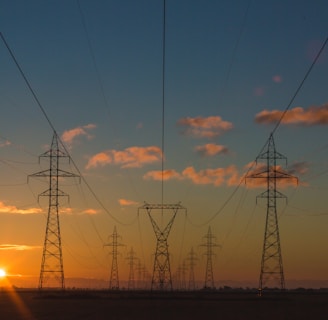Home Energy Audits & Efficiency Upgrades
Discover how home energy audits help identify hidden energy drains and lead to smart upgrades that improve comfort, cut utility bills, and protect the environment.
HOME UPGRADESDIYOLDER HOMES
5/9/20252 min read


A home energy audit is like a check-up for your house. It helps you find out where your home is losing energy and what you can do to fix it. Many people don’t realize how much money and comfort they lose each year because of small problems like air leaks or old appliances. But with an energy audit, you can spot these issues and take steps to solve them. This can lead to lower utility bills, a more comfortable home, and even help the environment.
What Happens During a Home Energy Audit?
Whether you do it yourself or hire a professional, a home energy audit usually starts with a walk around your house. The goal is to look for things like drafts, poor insulation, and inefficient systems. Professionals use tools like blower doors (which help find air leaks) and infrared cameras (which detect heat loss through walls and ceilings).
They also check your insulation, heating and cooling systems (HVAC), windows, and major appliances. Looking at past energy bills can help them find patterns in your energy use, like spikes in winter or summer.
Common Problems That Are Easy to Miss
Many homes have the same problems that waste energy. These include:
Drafty windows or doors that let cold air in and warm air out.
Poor insulation in attics, basements, or crawl spaces.
Outdated HVAC systems that work too hard and use too much power.
Old appliances and light bulbs that use more energy than newer models.
Even if you don’t notice these issues day-to-day, they could be costing you hundreds of dollars a year.
Easy Fixes That Make a Big Difference
Once you find the problems, the good news is that many fixes are simple. Here are some popular upgrades:
Seal air leaks around windows and doors with caulk or weatherstripping.
Add insulation to your attic or crawl space to keep warm air in during winter and out during summer.
Install a smart thermostat to better control your heating and cooling.
Switch to LED lighting, which uses less energy and lasts longer.
Upgrade to ENERGY STAR® appliances, which are built to be energy efficient.
These upgrades not only save energy but also make your home feel more comfortable year-round.
Are Energy Upgrades Worth the Cost?
Some people worry that energy upgrades are too expensive, but many of them pay off quickly. For example, sealing air leaks and adding insulation can start saving you money right away. Plus, there are rebates, tax credits, and utility company programs that can lower your out-of-pocket cost.
Let’s say you spend $1,000 on upgrades. If they help you save $300 each year on energy bills, they’ll pay for themselves in just over three years—and then keep saving you money after that.
How to Get Started
If you want to improve your home's energy use, here’s how to begin:
Do a quick self-check for drafts, poor insulation, and old appliances.
Hire a professional auditor if you want a deeper look.
Make a list of fixes, starting with the ones that save the most money.
Apply for rebates or incentives from your utility company or local government.
Keep track of your energy bills to see the results over time.
It’s also a good idea to do a follow-up energy check every few years to catch new issues before they become costly.
A home energy audit is a smart step for any homeowner. It helps you find hidden problems, improve comfort, and save money over time. Even small changes—like sealing a few cracks or switching to LED bulbs—can make a big difference. By taking action now, you’re not just lowering your bills—you’re also creating a more comfortable and energy-efficient home for your family.
Quantum Scope Inspections
Your Home’s Health, Our Top Priority
get the Home Seller's Handbook, 2025 Edition
Maximize your investment with repairs and maintenance, on Amazon.
© Quantum Scope Inspections 2025 | All Rights Reserved | Privacy Policy
Website Design by Creative Web Design Lab
